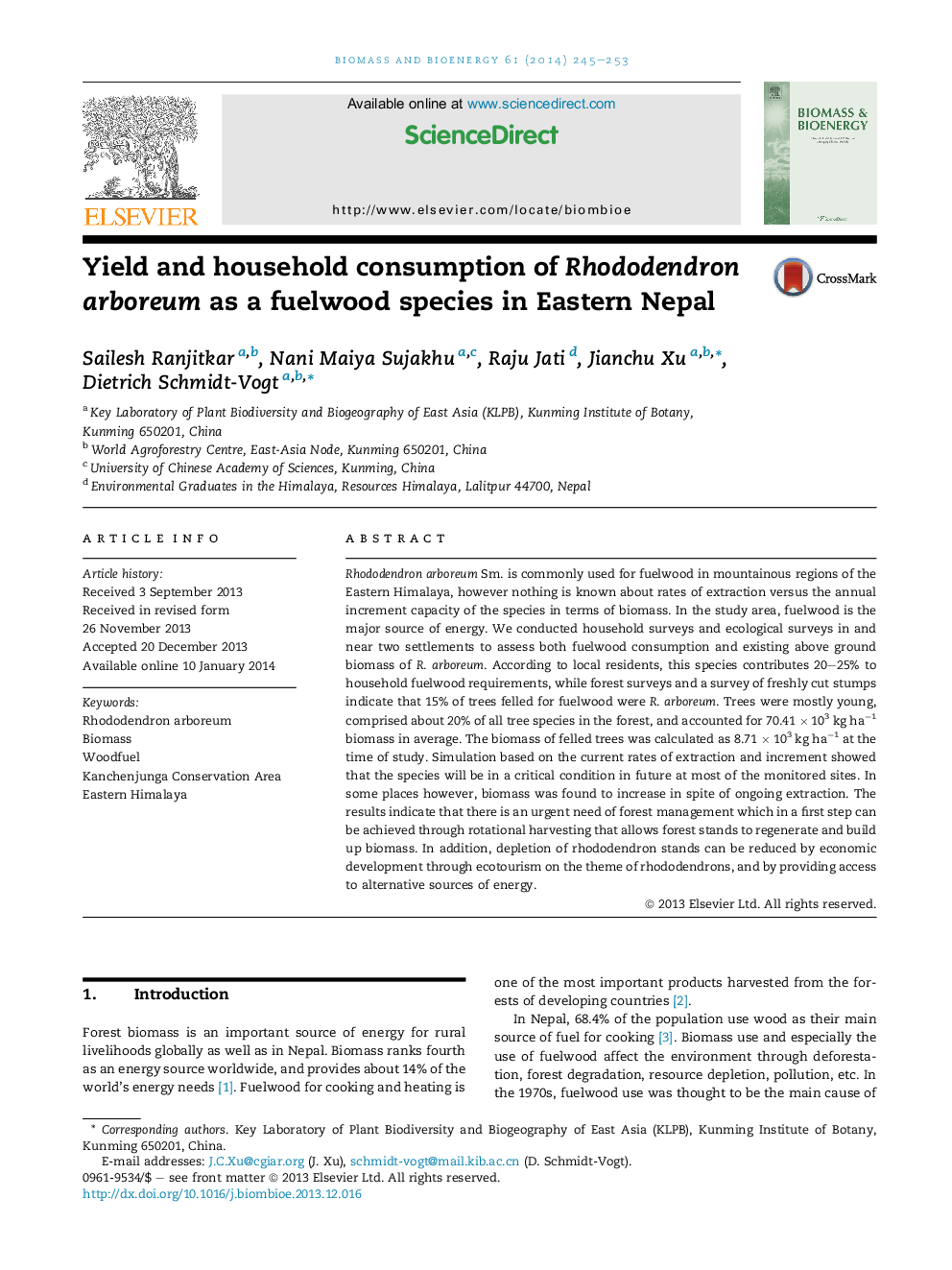| کد مقاله | کد نشریه | سال انتشار | مقاله انگلیسی | نسخه تمام متن |
|---|---|---|---|---|
| 676966 | 1459832 | 2014 | 9 صفحه PDF | دانلود رایگان |
• Contribution of R. arboreum to total annual fuelwood consumption quantitatively assessed.
• Removal of biomass of R. arboreum was found to be higher than biomass addition, threatening the species distribution.
• Growth ring analysis revealed very slow increment in diameter and hence in biomass.
• Fuelwood harvesting, slow increment and slow growth identified as main causes of declining biomass.
Rhododendron arboreum Sm. is commonly used for fuelwood in mountainous regions of the Eastern Himalaya, however nothing is known about rates of extraction versus the annual increment capacity of the species in terms of biomass. In the study area, fuelwood is the major source of energy. We conducted household surveys and ecological surveys in and near two settlements to assess both fuelwood consumption and existing above ground biomass of R. arboreum. According to local residents, this species contributes 20–25% to household fuelwood requirements, while forest surveys and a survey of freshly cut stumps indicate that 15% of trees felled for fuelwood were R. arboreum. Trees were mostly young, comprised about 20% of all tree species in the forest, and accounted for 70.41 × 103 kg ha−1 biomass in average. The biomass of felled trees was calculated as 8.71 × 103 kg ha−1 at the time of study. Simulation based on the current rates of extraction and increment showed that the species will be in a critical condition in future at most of the monitored sites. In some places however, biomass was found to increase in spite of ongoing extraction. The results indicate that there is an urgent need of forest management which in a first step can be achieved through rotational harvesting that allows forest stands to regenerate and build up biomass. In addition, depletion of rhododendron stands can be reduced by economic development through ecotourism on the theme of rhododendrons, and by providing access to alternative sources of energy.
Journal: Biomass and Bioenergy - Volume 61, February 2014, Pages 245–253
